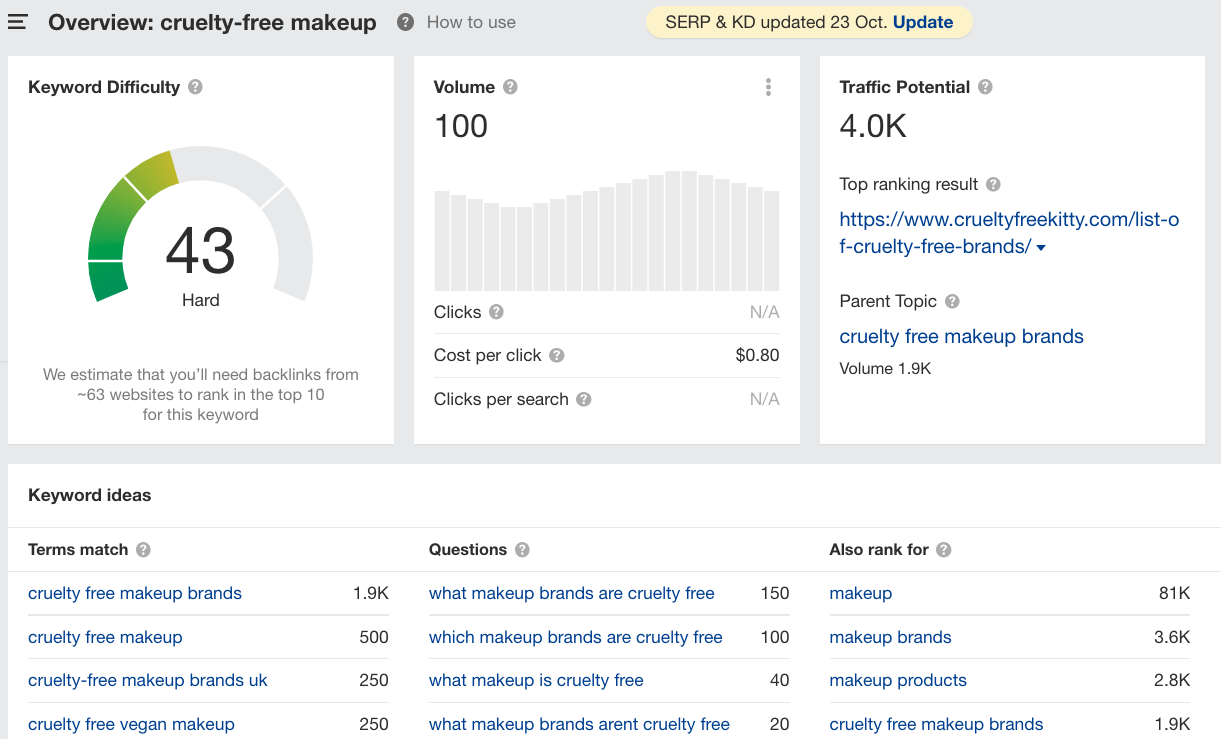3 min read
Honchō Scoops Up Two UK Search Awards!
It’s official, we've added not one, but two shiny trophies to our awards cabinet! We’re over the moon to share that we’ve triumphed at the UK Search...
2 min read
 Leanne Douglass
:
Nov 3, 2022 6:09:42 AM
Leanne Douglass
:
Nov 3, 2022 6:09:42 AM

When rebranding, most people think about brand identity, visuals, values, mission statement, and positioning. Developing these might entail a little research, but have you ever considered a rebrand from an SEO point of view?
Using data and SEO tools in rebranding is often overlooked. However, incorporating data into your process can help you identify opportunities to help set up your new brand for success that might, otherwise, go unnoticed.
Using your current website, and top competitors research the following:
1. Ranking keywords and sessions
The first step in your research is competitive analysis on ranking keywords and sessions to understand where your current brand sits in the market. This gives you a benchmark for future understanding of the growth from your rebrand, as well as providing the opportunity to understand the market and who the leaders are. Upon analysis, you can then take a deep dive into the market leaders and see exactly where the gaps of your current brand are.
2. Analyse your authority vs competitors in your industry
This will help you understand how authoritative your website is compared to the market leaders in the industry. Analyse the different backlinks that you have compared to your competitors, and how valuable they are. This will show you where you sit in comparison to your competitors on authority, in the eyes of Google, as well as gaps on where other competitors are winning in this space, helping you to build on your digital PR strategy moving forward.
3. Measure your site visibility vs your competitors
Your site visibility is defined by how much your website and brand is seen across the entirety of the internet, taking into consideration the number of ranking keywords, organic sessions to your website, and backlinks. You want to analyse how visible you are in comparison to your competitors:
Firstly, look into keyword clusters from your keyword research to see which search terms may best fit the new branding. Assess monthly search volume, keyword difficulty, current rank, and advantages and disadvantages for each term.
You’ll need to see who is ranking for these different terms, if the search intent is correct, and whether it would be achievable to gain rankings for each keyword cluster.

With this information, you’ll be able to decipher which terms you want to include in your new brand, and which to avoid. You can also see competition, and search intent.
Next, research other, more personable, keywords that you would want associated with your new branding. For example: trust, good, affordable, best etc. These terms may not have the highest search volume, but they will build trust between your new brand and future customers.
From this, you’ll have different topic clusters and keyword categories which you can use to build into your brand like terms which you know you can achieve rankings for, and terms which are focused on exactly what you want your brand to be known for.
At Honcho, we use tools such as Ahrefs, Google Keyword Planner, SEM Rush, and MOZ to perform in-depth competitor and keyword analysis. These help us to build a picture of exactly where the brand currently sits, as well as create a marketing plan for the future using informed data.
Overall, it comes down to ensuring your marketing team has as much data and insights on the current market to discover the easy opportunities to make the most of and avoid highly-competitive marketplaces.
If you need support on your rebrand, reach out to our SEO team, we would love to help you and your team.

3 min read
It’s official, we've added not one, but two shiny trophies to our awards cabinet! We’re over the moon to share that we’ve triumphed at the UK Search...

5 min read
Understand ecommerce attribution models which attribution models can maximise your marketing efforts and ROI.

3 min read
Explore how social commerce is changing the way we shop online, blending social interactions with digital commerce for a seamless buying experience.